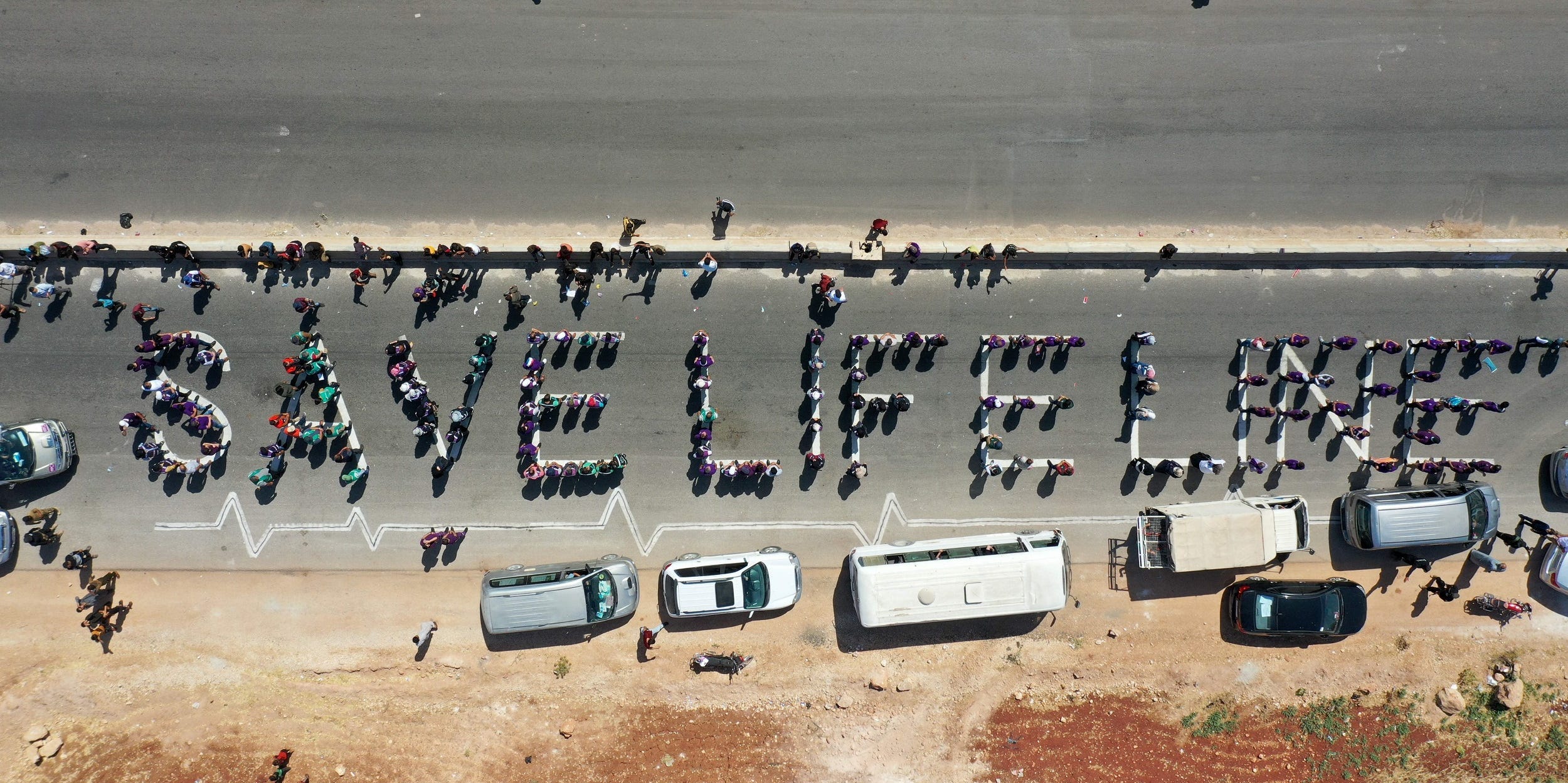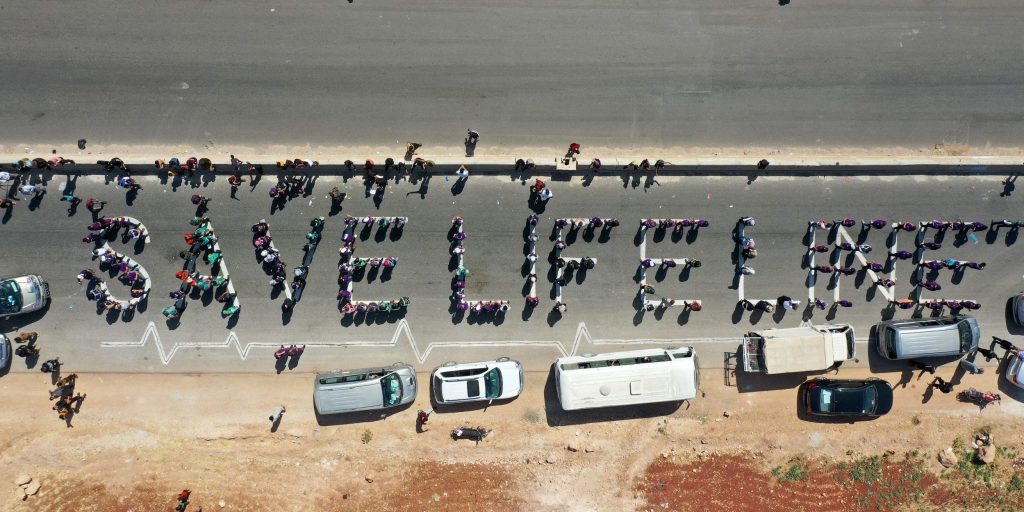
OMAR HAJ KADOUR/AFP via Getty Images
- The rebel-held Syrian province of Idlib is home to some 3.4 million people, many of them displaced.
- This part of northwestern Syria is under blockade and gets bombed by Russia and the Syrian regime.
- There is only one internationally sanctioned border crossing for humanitarian aid.
- See more stories on Insider's business page.
A majority of the those who live in the last opposition-held sliver of northwestern Syria are internally displaced, having already fled Russian and regime bombing campaigns elsewhere. Their final refuge is controlled by extremist militants and blockaded, with Damascus and its allies continuing to rain missiles and artillery fire on what is essentially one large refugee camp.
The single internationally sanctioned gateway to the outside is Bab al-Hawa, where the United Nations transports aid to hundreds of thousands of people who depend it. But even that gateway is tenuous, with Russia threatening to veto an effort at the UN Security Council to renew the border crossing's mandate, which expires July 10. Moscow maintains that, going forward, all aid should pass through the territory of its ally, Syrian dictator Bashar al-Assad, who has previously denied such aid as a means of starving his opponents
Mark Cutts, the UN's deputy regional humanitarian coordinator for the Syria crisis, told Insider what's at stake.
Charles Davis: What is the humanitarian situation on the ground in northwest Syria? Isn't the war over?
Mark Cutts: The violence continues daily. Hospitals have been badly damaged, aid convoys hit, and scores of people killed and injured, including children, disabled people, humanitarians, and medics. More than 2.7 million people are displaced by the conflict, where the humanitarian situation is at its most heartbreaking. Millions of people are pushed up against the border with Turkey. Poverty has gotten worse due to the conflict, an economic crisis and COVID-19. The number of people reliant on aid has increased by 20% to 3.4 million people. Prices of food staples rose by over 200% in the last year alone, while income sources and livelihoods have been eroded by the ongoing economic crisis. Severe acute malnutrition (SAM) for children increased by 55% in April 2021.
CD: How does aid currently get there and who supplies it?
MC: More than UN 1,000 trucks cross the border at Bab-al Hawa every month from our transport hub in Turkey.
CD: Isn't this area controlled by extremist groups? Do they manage distribution of this aid?
MC: Since 2014, the UN has delivered 39,000 trucks of humanitarian aid through this corridor. Every single one of these trucks has been inspected by UN monitors. We also check the goods when they arrive at warehouses in Syria, and at distribution points, and we do post distribution monitoring. It is the most scrutinized aid distribution in the world.
CD: Russia has been saying aid could go through regime-controlled Syria. Why isn't that acceptable?
MC: The scale of the needs in northwest Syria, where over 90% of the 3.4 million people in need are in extreme or catastrophic need - representing half of all Syrians at this level - is so great to require the massive response currently provided through the cross-border operation.
While we are hopeful that a cross-line mission will become possible, and even that they will become more regular, they are not currently able to replace cross-border deliveries. That would require safe, sustained, and unimpeded access for humanitarian operations, based on independent assessments of need.
CD: This isn't the first time aid efforts have been threatened. In 2020, the UN was prevented from continuing to supply aid to northeast Syria. What has been the impact of that?
MC: The situation there has become more difficult since the closure of cross-border operations last year. An estimated 1.8 million people require assistance in areas of northeast Syria outside of the control of the government. More than 70% are in extreme need - well above the national average.
From Damascus, most agencies have regular access to northeast Syria for nonhealth items in cross-line operations. On health items, in 2020, the World Health Organization completed six road shipments to northeast Syria, in addition to 13 airlifts. However, as the Secretary-General has noted: "This represents a modest proportion of total needs, and many facilities remain short of staff, supplies and equipment. Overall, though, there is not enough aid of all sorts reaching northeast Syria."

